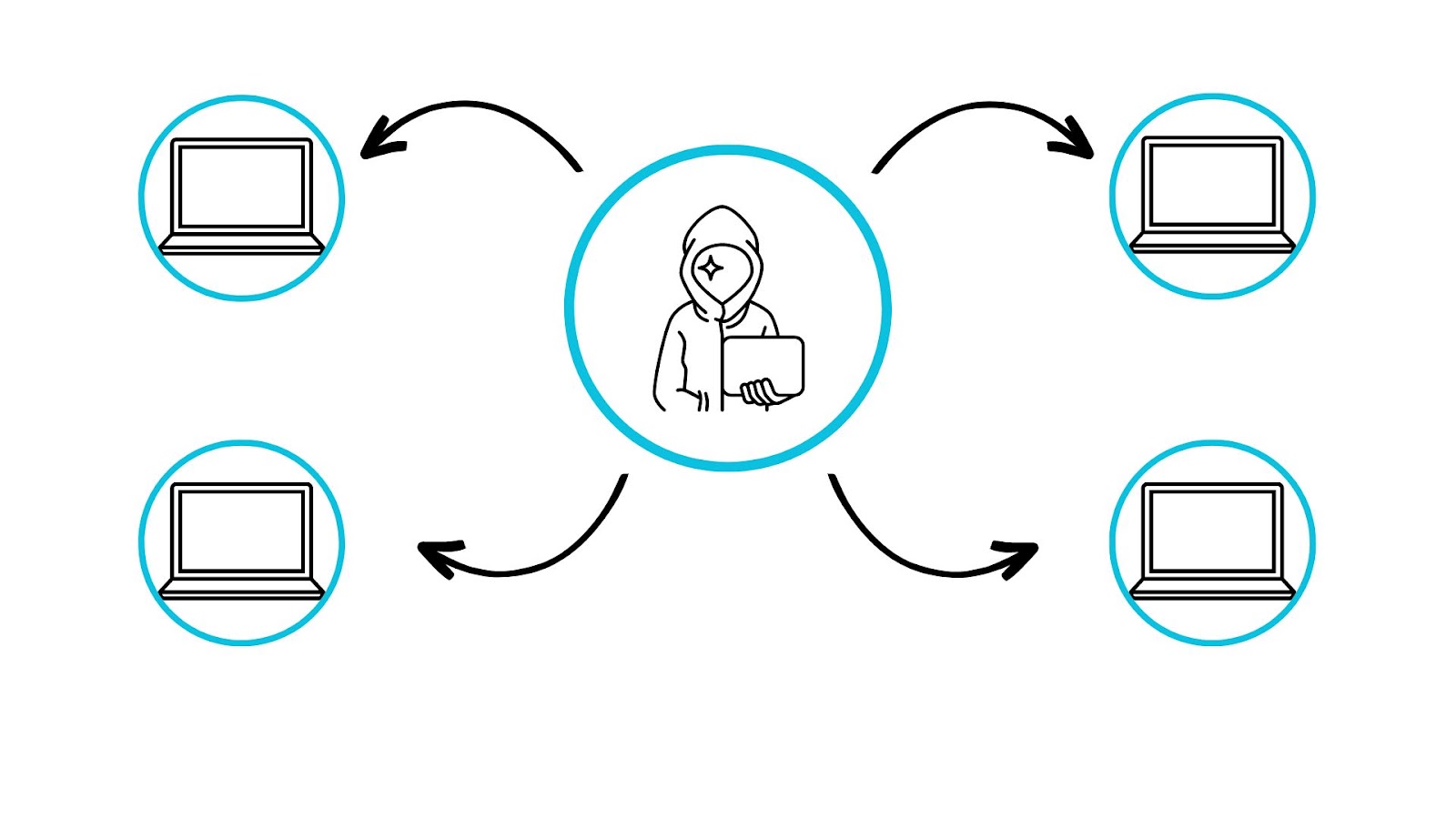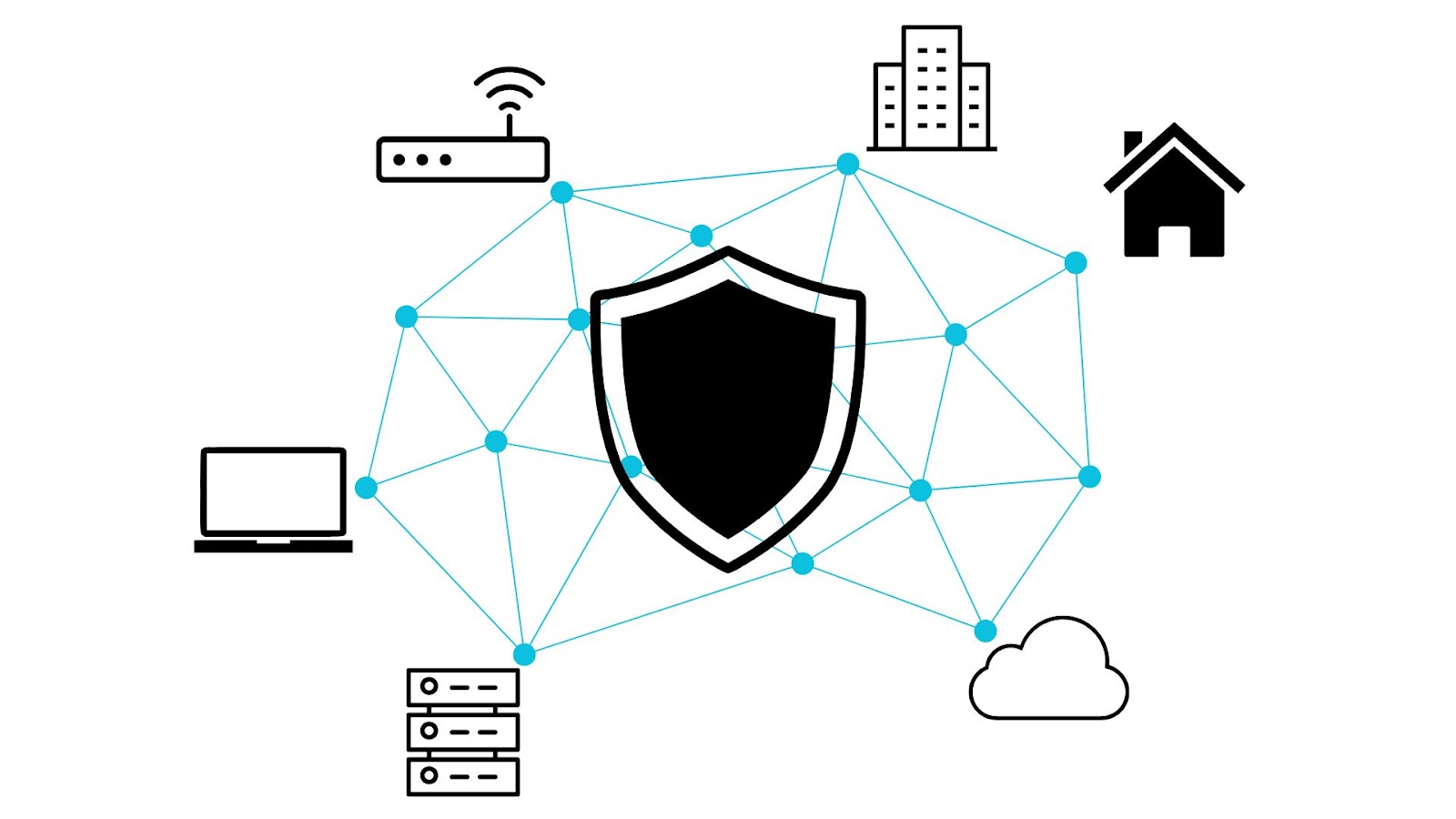Lateral movement is a technique used by cybercriminals to move through a network or system after gaining initial access. Once an attacker has gained access to a network, they will use various techniques to move laterally through the network, allowing them to gain access to sensitive data or systems.
Lateral movement techniques can include exploiting vulnerabilities in software, using stolen credentials, or leveraging existing permissions to move laterally throughout the network. The goal of lateral movement is to gain access to additional systems or resources that are not directly accessible from the initial point of entry.
One of the most common forms of lateral movement is known as “pass the hash.” This technique involves the attacker using stolen hashed credentials to authenticate to additional systems within the network, allowing them to move laterally without the need for further authentication. This technique can be difficult to detect, as it does not require the attacker to obtain the user’s plaintext password.
Another common technique used in lateral movement is the exploitation of vulnerable software. If an attacker can exploit a vulnerability in a particular piece of software, they may be able to gain access to additional systems or resources that are connected to the vulnerable system. This technique is commonly used in conjunction with other lateral movement techniques to move throughout the network.
Lateral movement is a significant threat to organizations of all sizes. It can be difficult to detect, as attackers often use legitimate tools and techniques to move laterally throughout the network. The longer an attacker is able to move laterally throughout a network, the greater the potential damage they can cause.

Here are some use cases where lateral movement can occur
- Ransomware attacks: In a ransomware attack, an attacker gains initial access to a network or system and then moves laterally to encrypt files and data on multiple systems within the network. This can result in significant damage and disruption to the affected organization.
- Advanced Persistent Threat (APT) attacks: APT attacks are typically conducted by nation-state actors or other advanced attackers, who use lateral movement techniques to gain access to sensitive data or systems within a targeted organization. These attacks can be highly sophisticated and difficult to detect.
- Credential theft attacks: In a credential theft attack, an attacker gains access to a user’s credentials (such as a username and password) and then uses those credentials to move laterally throughout the network. This can allow the attacker to gain access to sensitive data or systems that would otherwise be inaccessible.
- Insider threat attacks: Lateral movement can also occur in insider threat attacks, where an employee or other trusted insider abuses their access privileges to move laterally throughout the network and access sensitive data or systems.
- Supply chain attacks: In a supply chain attack, an attacker targets a third-party vendor or supplier that has access to a targeted organization’s network or systems. The attacker may use lateral movement techniques to move from the vendor’s network to the targeted organization’s network and gain access to sensitive data or systems.
Camouflaging Lateral Movement
Cybercriminals use a variety of camouflage techniques to hide lateral movement within a network or system. Here are some common camouflage techniques used in lateral movement attacks:
- Mimicking legitimate traffic: Attackers often use legitimate traffic patterns and protocols to blend in with normal network traffic, making it more difficult for security tools to detect their activities.
- Encryption: Attackers may use encryption to hide their activities from network monitoring tools, making it more difficult for security teams to detect their lateral movement.
- Use of legitimate credentials: Attackers may obtain legitimate credentials through phishing or other social engineering techniques and use them to authenticate to additional systems within the network, making it more difficult to detect their activities.
- Leveraging trusted tools and software: Attackers may use trusted tools and software, such as PowerShell or legitimate system administration tools, to blend in with normal network traffic and avoid detection.
- Traffic redirection: Attackers may use traffic redirection techniques, such as port forwarding or tunneling, to bypass security measures and avoid detection.
- Time delays: Attackers may introduce time delays between their lateral movement activities to avoid triggering alarms or detection mechanisms.
Why Is It Important To Prevent And Detect Lateral Movement?
Here are some key reasons why preventing and detecting lateral movement is important:
- Limiting the scope of an attack: By preventing lateral movement, organizations can limit the scope of a cyber attack, preventing an attacker from moving throughout the network and accessing sensitive data or systems.
- Minimizing the impact of an attack: By detecting lateral movement early, organizations can take steps to minimize the impact of an attack, preventing the attacker from causing further damage and reducing the amount of time and resources required for incident response.
- Protecting sensitive data and systems: Lateral movement can allow attackers to gain access to sensitive data or systems that would otherwise be inaccessible, putting the organization at risk of data theft, loss, or damage.
- Maintaining business continuity: A successful lateral movement attack can disrupt business operations, causing downtime and other disruptions that can impact revenue and reputation.
- Compliance requirements: Many organizations are subject to regulatory and compliance requirements that mandate the protection of sensitive data and systems. Preventing and detecting lateral movement can help organizations meet these requirements and avoid potential fines and legal liabilities.
To defend against camouflage techniques used in lateral movement attacks, organizations should implement a variety of cybersecurity best practices. These may include:
- mplementing network segmentation to limit the lateral movement of attackers within the network.
- Implementing strong authentication and access control mechanisms, such as multi-factor authentication, to prevent attackers from obtaining legitimate credentials.
- Using advanced endpoint detection and response (EDR) solutions to detect lateral movement activities and suspicious behavior on endpoints.
- Conducting regular security awareness training for employees to help them identify and avoid social engineering attacks.
- Regularly reviewing and updating security policies and procedures to keep pace with the evolving threat landscape.

Lateral movement as part of the attack lifecycle
- Initial compromise: The attacker gains access to the network or system through an initial compromise, which may involve exploiting a vulnerability, using stolen credentials, or leveraging a phishing or social engineering attack.
- Reconnaissance: The attacker conducts reconnaissance to identify potential targets within the network or system. This may involve scanning the network for vulnerabilities, identifying high-value systems or data, and mapping the network topology.
- Escalation of privileges: The attacker attempts to escalate their privileges within the network or system, allowing them to access sensitive data or systems that would otherwise be inaccessible.
- Lateral movement: The attacker uses various techniques, such as pass-the-hash, exploitation of vulnerable software, or abuse of existing permissions, to move laterally throughout the network or system. This allows the attacker to gain access to additional systems or resources that are not directly accessible from the initial point of entry.
- Data exfiltration: Once the attacker has gained access to sensitive data or systems, they may attempt to exfiltrate the data from the network or system. This may involve using a variety of techniques, such as file transfer protocols or command and control servers, to move the data outside of the network or system.
- Covering tracks: The attacker attempts to cover their tracks and avoid detection by deleting logs, altering timestamps, or other techniques to evade detection by security tools.
These stages may not always occur in a linear fashion, and attackers may repeat certain stages multiple times to achieve their objectives. By understanding the main stages of lateral movement, organizations can better protect themselves against these types of attacks and implement effective cybersecurity strategies to prevent and detect lateral movement.
How To Detect and Stop Lateral Movement
Detecting lateral movement can be challenging, as attackers often use a variety of techniques to blend in with normal network traffic and avoid detection by security tools. However, there are several methods that organizations can use to detect lateral movement within their networks. Here are some key strategies for detecting lateral movement:
- Network segmentation: By segmenting the network into smaller, more manageable segments, organizations can limit the potential impact of lateral movement and detect anomalous behavior more easily.
- Network monitoring: Implementing a robust network monitoring solution is one of the most effective ways to detect suspicious traffic patterns and identify potential lateral movement activities as it is the only solution that is capable of looking at the entire network as a whole (instead of host by host like EDR).
Monitoring the entire network including legacy servers that may not suitable for an EDR agent, virtual machines and basically anything creating a network footprint combined with machine learning algorithms will help detect anomalous behavior patterns.
- Endpoint detection and response (EDR): EDR solutions monitor endpoint devices for suspicious behavior, such as attempts to escalate privileges or execute malicious code.
- User awareness and training: Educating users on cybersecurity best practices and how to identify and report suspicious activity can help detect lateral movement and other cyber threats.
How can WireX Systems help with Lateral Movement and Incident Response
Network Detection and Response (NDR) plays a critical role in accelerating incident response by providing organizations with real-time visibility into network activity and alerting on suspicious behavior. Here are some ways in which an NDR can help accelerate the incident response process:
- Early threat detection: Detect threats in real-time and provide alerts to security teams, allowing them to respond quickly and prevent potential damage.
- Automated response: Automatic reports to provide immediate context into threats, sharing analytics reports between team members and integrating with 3rd party tools for blocking traffic or isolating endpoints to significantly reduce the time and effort required for manual response.
- Investigation and forensics: Provide detailed information about the specific actions that occurred within the network, what data was accessed and how allowing security teams to quickly understand the scope and severity of a potential threat.
- Up level skillset: Using the automated context provided for each threat helps even an entry level operator to response and to become a valuable analysts while allowing the more senior team members to focus on the most critical threats and respond accordingly.
- Integration with other security tools: NDR solutions can integrate with other security tools, such as SIEM and EDR solutions, to provide a more comprehensive view of network activity and accelerate incident response.
In conclusion, lateral movement is a common technique used by cybercriminals to move throughout a network after gaining initial access. Organizations must take a multi-layered approach to cybersecurity to prevent lateral movement and protect against cyber threats. By understanding the techniques used in lateral movement, organizations can better protect themselves against these threats and safeguard their sensitive data and systems.
At WireX Systems, we understand your pain when it comes to properly investigating every alert. And currently, the investigation tools that are presently available have failed to meet enterprise business needs. However, with our approach, we deliver comprehensive security intelligence in actual human-readable format, so you can save effort and time when validating alerts and responding to security incidents.
You can learn more about how our technology reduces breach dwell time, but we also have a Whitepaper on the top 3 requirements to turbocharge your incident response.
And, as always, reach out to us, and we’ll discuss how to best support your network security needs!






